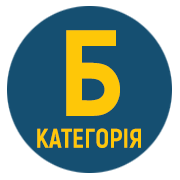PSYCHOLOGICAL FEATURES OF TEAMBUILDING AND TEAM INTERACTION IN THE MEDIUM OF HIGHER EDUCATION
Keywords:
students, educational process, teambuilding, team interaction, Agilecoach system, experimental results.Abstract
The article presents the results of theoretical and experimental research, which aimed to establish the peculiarities of forming team interaction skills of stu-dents at the stage of studying. The formation of team interaction skills in learning environment is facilitated by average extraversion rates, high rates of professional goals, interests and internment, competence, willingness to work in a cohesive team under the guidance of an open-to-contact manager and personal professional suitability. In accordance with the rules of team building, it has been established that «Collective performance of work», «Collective responsibility» are these new conditions for fulfilling the task for the vast majority of potential team members, which are not suitable to operate effectively in such situations. «The orientation of the selary to the final result of the team work», «Enhanced performance discipline» and «Worthy value of team stimulation to the final result» have worked only partially. The reason is that not all potential candidates for the task at the team had attractive incentives. Under the rule of «Autonomous self-management of the team», it has turned out that in many attempts to fulfill the task, such an option of activity causes conflicts, misunderstandings and group breaks. Obviously, most students are not capable of performing a collective task in offline mode. Also, the process of acquiring leadership status in student pairs was very problematic. However, it has been established that the potential for the formed team is the ability to quickly and effectively cope with the task, generate non-standard solutions, create unique and effective collegial solutions, experience of cooperation and mutu-al support is formed, each participant voluntarily assumes the possible participation in the coordination of work, the presence of a team creates the trust of participants and outsiders, as well as other important phenomena and processes. Despite this fact, in order to form a team it is necessary to support its resources and expenses for training potential teams for team work, there is always a possibility of destruction of the group due to conflicts among its participants. The conclusion is made on the necessity of implementing a system of joint and effective activity in the educational process.
References
Армстронг М. Практика управления человеческими ресурсами: учебник. 8-е изд. пер. с англ. СПб.: Питер, 2005. 831 с.
Вольфсон Б. Гибкое управление проектами и продуктами. М.: Ozon.ru. 2016. 144 с.
Зинкевич-Евстигнеева Т. Д., Фролов Д. Ф., Грабенко Т. М. Теория и практика командообразования. Современная технология создания команд / под ред. Т. Д. Зинкевич-Евстигнеевой. СПб.: Речь, 2004. 304 с.
Колосович О. С., Куций О. А. Результати експерименту з формування у студентів навиків професійної взаємодії шляхом впровадження у навчання елементів системи «Agile coach». Соціально-правові студії: науково-аналітичний журнал. Львів: ЛьвДУВС, 2018. Вип. 1. С. 66–71.
Крушельницька О. В., Мельничук Д. П. Управління персоналом: навч. посібник. Вид. друге, перероб. і доп. К.: Кондор, 2006. 308 с.
Свергун О. В., Пасс Ю. А. HR-практика. Управление персоналом: Как это есть на самом деле. СПб.: Питер, 2005. 320 с.
Технології роботи організаційних психологів: навч. посібник / за ред. Л. М. Карамушки. К.: Фірма «ІНКОС», 2005. 366 c.
Хміль Ф. І. Управління персоналом: підручник для студентів вищих навчальних закладів. К.: Академвидав, 2006. 488 с.
Hass K. B. Managing complex projects: a new model. Management Concepts Inc. 2009. 298 р.
Sahota M. An Agile Adoption and Transformation Survival Guide. Published by Info Q. 2012. 80 p.





